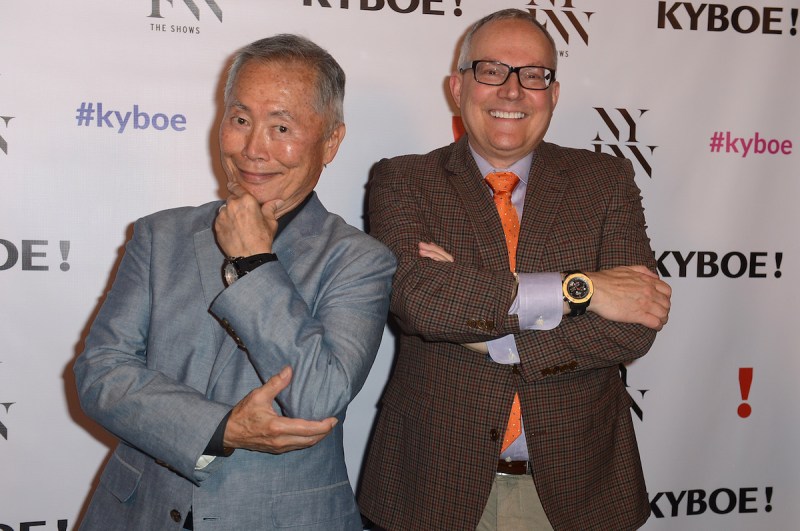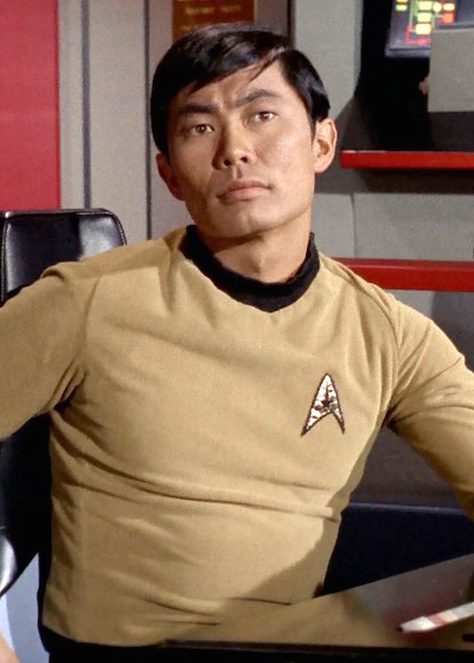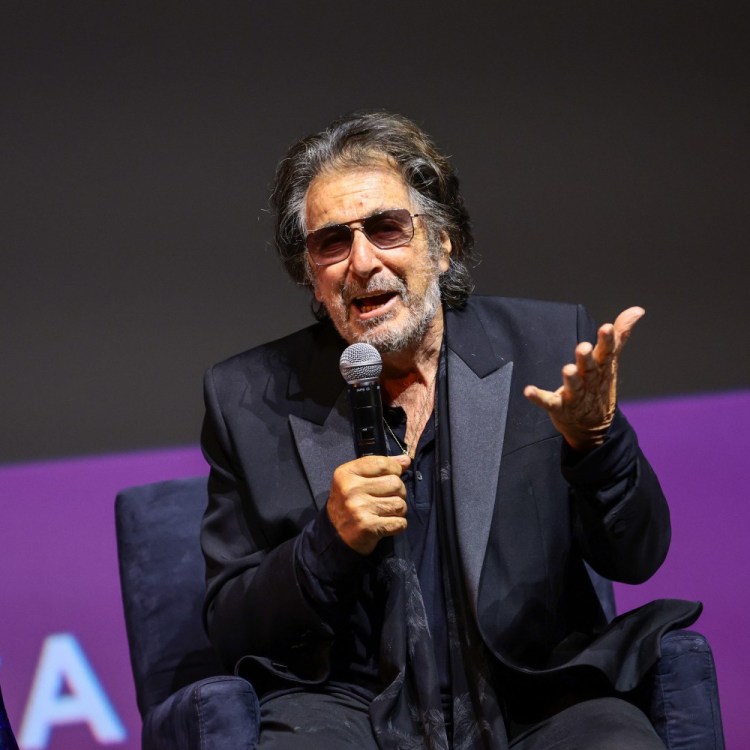George Takei is best known for his part in a TV series that was canceled nearly 50 years ago. That iconic show, Star Trek, flopped at the time, but has since grown into one of the most beloved and lucrative properties in show biz history. Likewise, Takei has navigated a career in which each step seems more unlikely than the last, culminating in him emerging at age 80 as social media gadfly and a man known all over the planet. (And, if Star Trek‘s taught us anything, possibly beyond it.)
Takei was born in Los Angeles in 1937 to Japanese-American parents: his mother had been born in the United States as well. Despite this, at age five, he and his family were sent to an internment camp in Arkansas during World War II. (They also spent time at Camp Tule Lake in northern California.) He was there until age eight, recalling decades later that his parents initially tried to protect him by calling it a “long vacation.” While quickly realizing something was wrong because of the “barbed wire fences and sentry towers,” he also noted that children are “amazingly adaptable,” and he said he adjusted to the experience surprisingly quickly.
Incredibly, he has said the real trauma came when they were finally freed. Given “a one-way ticket to wherever in the United States we wanted to go to, plus $20,” they returned to Los Angeles to find it nearly impossible to get jobs or housing. Indeed, he remembered his younger sister actually wanting to go back “home” to the Arkansas internment camp.
It’s necessary to understand what Takei experienced growing up to appreciate how remarkable his later success was. His first acting work came on voiceovers for the English dubs of Godzilla movies. He wound up playing quite a few small parts on TV shows that required a “token” Asian actor. (He appeared on My Three Sons three times from 1964 to 1965, playing a different Asian character on each occasion.) He has regretted some of these stereotype-reinforcing roles, such as playing a caricatured Japanese solider in the 1970 Jerry Lewis film Which Way to the Front: “I will never live that down.”

A more positive experience came in 1968’s The Green Berets, at least on a personal level. Takei played a South Vietnamese soldier. The film’s star and co-director John Wayne supported the Vietnam War, while Takei was open about his opposition to it. Wayne told him he didn’t minds Takei’s views: “I have mine and you have yours and I respect that.” (Takei has said, that, overall, Wayne was a “very decent guy.”)
Of course, the project that changed Takei’s life forever was his role as Hikaru Sulu on the TV series Star Trek. Takei was only 29 when the show premiered in 1966. Takei has reprised the part in six movies, an animated series, a video game, and more. He says today of the show: “It has enhanced my life and amplified my voice in so many ways.”
For decades, however, success brought anxiety, as Takei grew in fame while hiding his homosexuality. He remembered those decades in 2016: “I’d take a female friend to premieres. Then go out to a gay bar.” (He acknowledged that his situation was “high risk,” since he could be recognized and exposed.) Takei did try to get the show to address homosexuality, which creator Gene Roddenberry declined after the amount of criticism they received for the interracial kiss between Kirk and Uhura.

Takei finally publicly came out in 2005, when he was nearing 70. He has since been outspoken on LGBTQ issues and even shares his marriage with Brad Altman (who took his last name) via the Internet through the series It Takes Two. He has found a new level of fame through a mastery of social media and regular appearances with Howard Stern, where his utterance “Oh my” became a meme sensation. Indeed, he has the power to prank the political world, as he did earlier this month with his April 1st announcement he would be running for Congress against the House Intelligence Chair Devin Nunes.
In recent years, Takei has regularly revisited his childhood experiences. He is currently working on a graphic novel about those years in the internment camps. The 2015 Broadway musical Allegiance was also based on his family’s confinement. (He starred in the show as well.) The result is that, as he turns 80, Takei has come to embody more and more of the American experience: sometimes good, sometimes bad, and often quite surreal.
—Sean Cunningham for RealClearLife
This article was featured in the InsideHook newsletter. Sign up now.
























